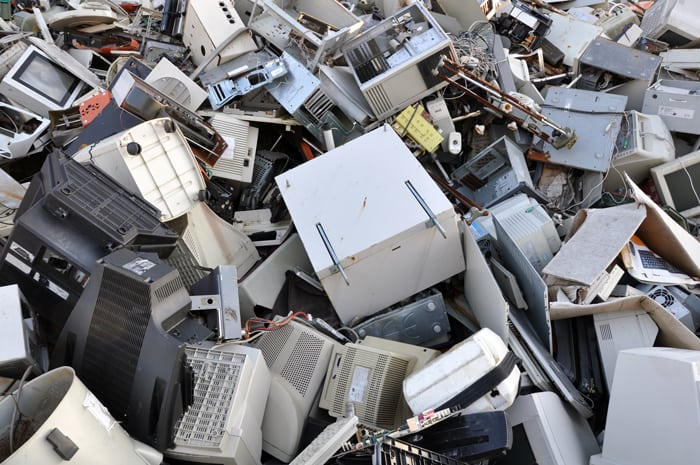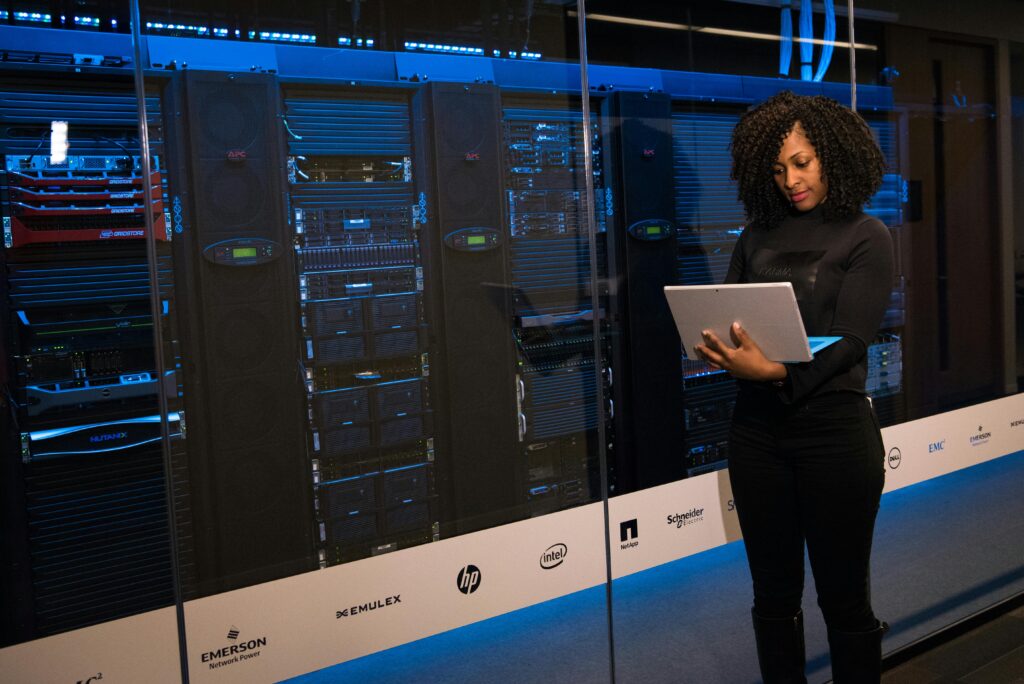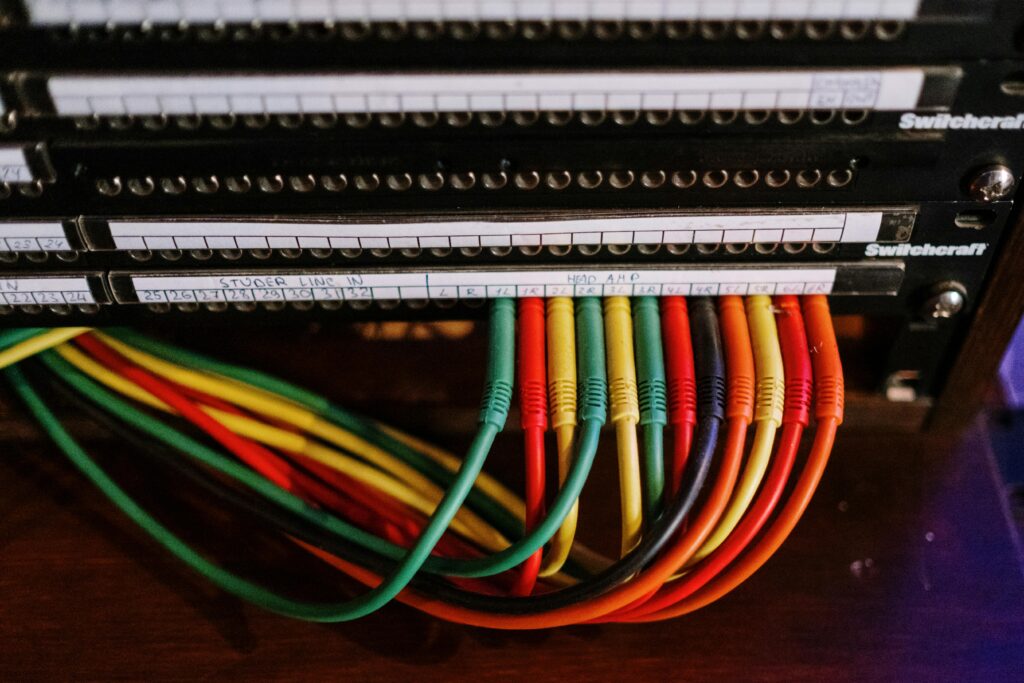In this blog, we’ll talk about selling computers and other IT equipment.
Let’s dive in.
In the modern data center, technology advances at breakneck speeds.
Because of such rapid advances, when and how to sell old computers can be complicated.
Servers and workstations were once expected to remain in service for as long as a decade just a few years ago.
This was assuming that a system was well-maintained and upgraded as necessary.

Today, however, rapidly increasing hardware demands imposed by ever-expanding internet-connected services has pushed the average server lifespan down to a short three years. Obviously, that’s not a long time.
That shortening of the equipment replacement cycle is putting more pressure than ever on data center managers.
They have to find ways to contain ballooning equipment costs. And they must do so without sacrificing functionality or falling behind the times.
Today, that’s no small task. According to IT industry research firm Gartner, data center systems spending is expected to decrease by .2% in 2019, further squeezing already tight budgets.
The good news is that for every data center that removes a server from active use to replace it with a newer model, there are hundreds of other businesses for whom that retired server might be a perfect fit.
This is even true in situations where the retired hardware isn’t fully functional. This is because it may still be possible to sell the individual working components to turn a substantial profit.
Let’s shed some light on the process of selling decommissioned servers and equipment.
Below are four tips to help data center managers succeed in turning their retired hardware into a valuable revenue stream.
4 Tips on Selling Computers and Other IT Equipment:
Tip 1 – Selling Computers and Servers in Bulk is Optimal
In most data centers, the replacement of servers and other hardware follows a planned cycle (barring equipment failure). The cycle is one designed to coincide with the expiration of maintenance and service contracts.
Contracts on the hardware and a cost/benefit analysis regarding the ongoing costs of upkeep.
It also means that there’s an excellent likelihood of larger quantities of similar hardware being decommissioned all at once.
That creates the opportunity to sell old computers and other IT equipment in bulk.
This doesn’t just reduce the in-house management workload of the process. It also could fetch the highest return.
When it comes to servers, this is where a three-year replacement cycle can turn out to be valuable.
That’s because, at five years of age, servers begin to see a significant drop-off in value. The reason for this, of course, is because of the rapid development pace of new hardware.
When selling servers in bulk at three years of age, the internal components should be in fine working order and still well within their useful lifetime.
Due to these reasons, they still retain plenty of value on the resale market.
An ITAD specialist or bulk purchaser will also generally include shipping or pick-up. They will pay in full upon acceptance of the lot of hardware.
Tip 2 – Greater Than the Sum of Its Parts
In many cases, retired hardware that is still useful but approaching obsolescence might be more valuable when broken down into individual components.
For example, CPUs may have a longer useful lifespan than hard drives. They are typically the most expensive component in a given server.
That’s good news for data center managers looking to recover some value from their retired servers.
Removing valuable components like CPUs and discrete graphics hardware and selling them either as a lot or individually can help recoup some costs from hardware. Costs that, in short, would otherwise be written off for a loss.
However, there are bound to be components that won’t fetch a high price when going this route. With this in mind, it is still a far better option than opting for costly disposal.

Component sales are also a great option when in-between replacement cycles. This means when CPU and memory upgrades are performed on in-service systems to keep them operational.
With careful planning, it may be possible to use component resales as a source of upgrade funding. This can play a key role in maximizing tight capital expenditure budgets.
Tip 3 – Compliance Has Costs, Too
Data center managers know that decommissioning equipment isn’t a simple matter of replacement and disposal.
When removing systems from active use, additional steps like data destruction and storage sanitation are important items to care for.
Also, things like disassembly and proper handling of e-waste are important to avoid costly future problems.
One need only look at past examples. Remember AT&T’s $52 million payout? It resulted from improper handling of hardware disposal.
So obviously, the price of getting the process wrong can be steep.
The labor and oversight necessary to properly dispose of retired equipment can add significant costs to an already losing proposition.
It is possible, however, to avoid those costs while maintaining legal and ethical compliance. While at the same time turning a profit disposing of old equipment.
Engaging the services of an e-waste recycling specialist is an excellent way to turn a costly and labor-intensive disposal process into another opportunity to recover some of the hardware‘s initial costs.
A well-resourced e-waste recycler can extract every bit of value from the hardware they process.
The value that comes from reconditioning parts to extracting the precious metals used in the fabrication of PCBs and other components.
An e-waste recycling specialist will also be able to provide guaranteed data destruction (with documentation).
And will be certified by relevant local authorities in their handling of hazardous waste.
At the end of the process, they’ll even share a portion of the proceeds. With a good company, the process to sell old computers and IT equipment should be painless.
Tip 4 – Flipping the Switch
It’s also important to realize that servers aren’t the only major components of a data center that are beginning to see a shorter replacement cycle.
These days, heavier usage patterns and virtualization are demanding ever-higher data throughout all across data center networks.
That is forcing many data center managers to refresh networking equipment at a pace that would have been unheard of a few years ago.
Those refreshes can come in the form or replacing whole core switches or upgrading individual modules to higher-capacity models wherever possible.
Unlike servers, though, switches don’t reach end-of-life status right away. This means that they retain plenty of resale value over longer periods of time.
That also makes them prime candidates for offsetting upgrade costs.
Enterprise-grade switches, routers and firewalls are great resale items. Also, management engines work well to bring in some cash. These items should bring decent prices.
Even individual components like fiber channel adapters and optical transceivers retain plenty of value. This is due to their wide use creating a steady demand.
Networking equipment resales will also likely be a more frequent occurrence going forward. Especially as data centers switch to commodity hardware and greater use of server-based routing solutions.
So there’s never been a better time to turn over high-end networking gear.
Recap – An Evergreen Resource
The key takeaway here is that decommissioned data center servers and equipment can serve as a steady source of reclaimed funds at almost every stage of their lifecycles.
This is why companies need to think about how to sell old computers and other IT equipment.
What’s more, building resale or recycling procedures into equipment replacement planning can change the entire equation for data center managers. This is important when they are trying to balance staying ahead of the curve with not breaking the bank.
In an era where data center demand continues to grow, capital expenditures are beginning to shrink. And industry competition is fierce as every dollar counts.
There’s no such thing as disposable assets. Now you should know exactly how to make sure your data center gets every last cent out of its most valuable resources.
If you need help selling old computers or your old IT equipment, chat with us or fill out a quote form below.
If you are upgrading your computers in bulk then read our blog, The 4 Best Places to Sell Computers.
Our team is ready to help in any way we can.





